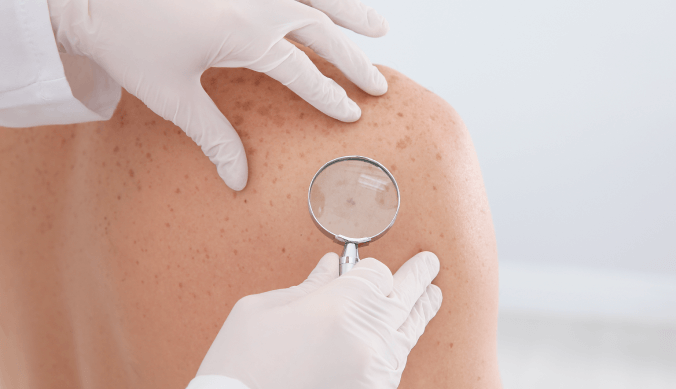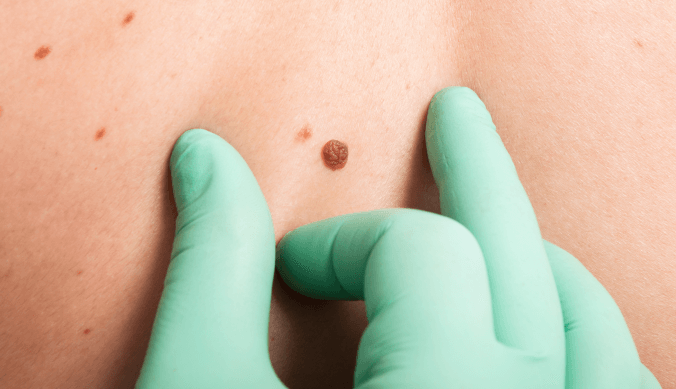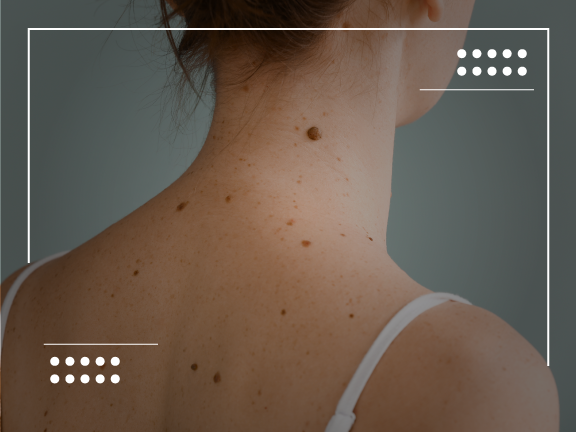Melanoma can be defined as a cancer of the skin that forms when melanocytes grow uncontrollably, which give skin its tan color. The cells become malignant and, in some cases, spread to other parts of the body. Melanoma first appears as a change in the appearance or shape of a mole or area of pigmented skin.
Although the 98 percent five-year survival rate when caught in early stages is extremely high compared to other cancer types, there are more than 10,000 annual deaths from melanoma due to the vast number of cases that occur each year. Unlike other cancer types, melanoma is preventable, creating an urgency for awareness to protect our skin from factors that lead to this disease.
In this article, we will review eight questions to help you understand more about cutaneous melanoma.
What Is Cutaneous Melanoma?

The three types of skin cancer are basal cell carcinoma, squamous cell carcinoma, and melanoma. Although melanoma is the rarest of the three, overall, skin cancer is the most common occurring cancer type in the United States.
Any melanoma that occurs in the skin is considered cutaneous, which is more than 90 percent of all melanoma cases.
What Is the Difference Between Cutaneous Melanoma and Melanoma?
Only a few types of melanomas are considered non-cutaneous and are rare compared to cutaneous melanomas. These often occur in areas other skin cancers do not such as the eyes, inside the nose, mouth, rectum, or vagina.
Non-cutaneous melanomas are more aggressive and difficult to treat than cutaneous melanomas. Only roughly 5 percent of melanomas are considered non-cutaneous, mostly occurring in the eyes.
What Are the Causes of Cutaneous Melanoma?
Melanoma is caused by overexposure to the sun or other sources of ultraviolet rays such as indoor tanning.
Cutaneous melanoma can be classified as several different subtypes based on their location, appearance, and how aggressive they are. These include:
- Superficial spreading melanoma
- Lentigo maligna melanoma
- Amelanotic melanoma
- Nodular melanoma
There are several tips for decreasing your risk of developing melanoma, which include:
- Wear clothes with sleeves when exposed to the sun for prolonged periods of time
- Wear sunscreen regularly, even when cloudy
- Hats and sunglasses can help protect the face and scalp from sun exposure
- Limit tanning bed usage or avoid them completely
How Can You Tell If a Spot Is Cancerous?
If you have any concerns about a mole or spot on your skin, visit your dermatologist. You should also visit your dermatologist annually for a full body exam, especially if you are at increased risk of skin cancer.
Some questions to ask when concerned if a spot is cancer include:
- Is the mole or birthmark asymmetrical?
- Are the edges of the mole or birthmark blurred, irregular, ragged, or notched?
- Is the color consistent throughout or does it have shades and patches of brown, black, blue, white, pink, or red?
- Is the spot bigger than one quarter of an inch (pencil eraser)?
- Has the mole changed in any of its color, size, or shape?
Once the diagnosis is confirmed, doctors will then begin staging for melanoma, the process of determining the extent of the cancer through additional testing. The stage of melanoma and other cancers affects the treatment options, the prognosis, and estimated survival rate.
Understanding and Managing the Side Effects of CAR T-Cell Therapies
Chimeric antigen receptor (CAR) T-cells are modified T lymphocytes from a lab. T lymphocytes are a type of white blood cell in the bone marrow that protects the body from infection and fights cancer. These cells are given a gene for a receptor (CAR) to allow the cells to attach to specific antigens located on the surface of cancer cells. The cells repeatedly multiply in the lab until they are in the millions before being injected back into the patient’s bloodstream to locate and kill cancer cells.
The overall survival rate is high for melanoma, but if caught in advanced stages or the disease has metastasized, the survival rate is only around 10 percent. Today, researchers are evaluating CAR T-cell therapy for the treatment of metastasized melanoma to improve this statistic.
Like other treatments for cancer, there are side effects that can vary in each patient. Some common symptoms include:
- Low levels of B-cells
- Neurologic effects such as troubled speech, confusion, or seizure-like activity
- Cytokine release syndrome (CRS) from T-cells releasing cytokines into the bloodstream, causing fever and the blood pressure to drop
- Frequent infections
Additional treatments can be used to strengthen the body during CAR T-cell therapy. These often include steroids or tocilizumab. Researchers continue to evaluate new ways to limit and manage side effects from treatment in clinical trials.
What Is the Success Rate of CAR T-Cell Therapy?

CAR T-cell therapies have particularly succeeded in treating lymphomas that are resistant to other treatments, or that have relapsed. Specifically, nearly 90 percent of acute lymphoblastic leukemia (ALL) patients achieved remission after failure to respond to standard treatment. However, the survival rate only increased in close to 50 percent of the patients in the study. Those interested in CAR T-cell therapies should talk to their doctor about enrolling in a clinical trial to see if it’s right for you.
What Is the Difference Between Cutaneous and Subcutaneous?
Cutaneous is a term used to describe the skin. Subcutaneous refers to beneath the skin. Melanoma is only considered subcutaneous if it has spread beyond the skin. Melanoma is one of the most common cancers that spreads to both the cutaneous and subcutaneous (deepest) layers of skin.
Where Does Cutaneous Melanoma Spread?
Unlike other skin cancers, it is not rare for melanoma to spread to other parts of the body if left untreated. Melanoma can spread to other areas of the skin, or deeper underneath the skin.
Sources:












